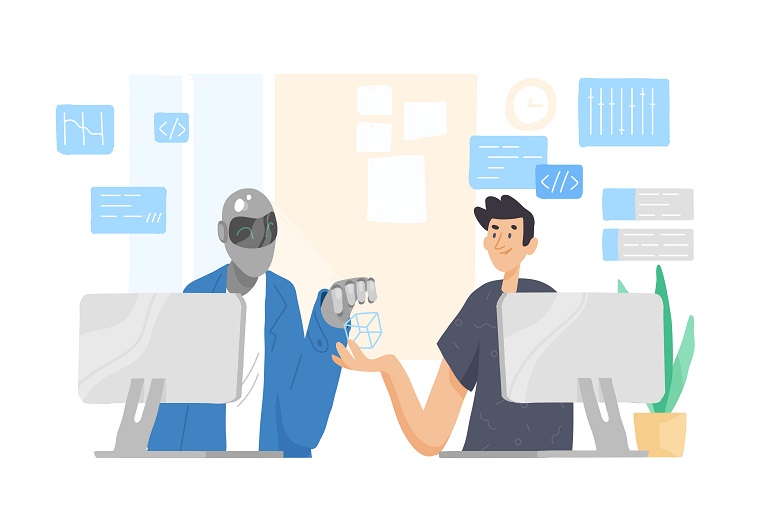Despite the mad scramble to set up remote agents amid a crisis that sent contact center volume into the stratosphere, many companies have taken the opportunity to put advanced technology to use in order to better serve customers during this pandemic. This is the upshot shared by Sheila McGee-Smith, lead analyst and founder of McGee-Smith Analytics, and Dan Miller, lead analyst and founder of Opus Research, during the
Enterprise Connect Digital Conference & Expo session, “
AI in the Contact Center from Pilots to Mainstream” (available on demand).
The discussion centered around the transformation of artificial intelligence (AI) in the contact center and positive outcomes that resulted from “agents working remotely and the rapid need to handle a lot of interactions with fewer resources,” Miller said.
The pandemic made it clear that companies would have to change their wholesale workflows for customer care, including live agents and the technology that supported them, Miller said. Many turned to intelligent virtual assistant (IVA), virtual agent, and other AI-infused technology, and during the session Miller and McGee-Smith shared a variety of solutions and use case examples from niche vendors and contact center platform providers alike.
First, they spotlighted examples of how three providers adapted their AI offerings for COVID-19 response, along with use cases for each.
- Nuance Kindness and Commerce Bundle – this bundle comprises the company’s existing live chat, voice-to-messaging, virtual assistant, biometric authentication, and fraud prevention offerings. Using the Nuance technology, Spanish telecom carrier Telefónica took just one month to develop a solution that uses voice biometrics to determine if a caller is over age 65. When identified, the callers receive priority in the call queue for routing to best available agent, said Miller.
- Verint Conversational AI – this cloud-based customer engagement platform provider quickly adapted call flow to address COVID-19-related questions coming into its customers. “For example, a pharmaceutical company that has been using Verint since 2017 for internal IT helpdesk support was able to introduce 25 new topics to cover a broad range of needs in just a matter of four days — “and it all works,” Miller said.
- Interactions Virtual Agent for Outbound Calls – Along with ERC, an international business process outsourcing company, Interactions developed “Eva,” a virtual agent designed to reduce misdirects and misdials so that collections agents can appropriately direct customers and accomplish tasks. “But one of the things that they’re finding with the current nature of calls is that the conversational intelligence and a mixture of human insight with the core language understanding and machine learning can assist more people in instances and show empathy, even though it’s through an automated agent,” Miller said. McGee-Smith said she particularly liked this use case because it shows that virtual agents can be put to good use for outbound calling. “Here, it’s completely different than the robocalls that people fear,” she said.
Next they spotlighted examples of how various organizations have used AI within their contact centers to better serve customers during the pandemic.
- Banco Galicia – This Argentinian bank, an Avaya contact center customer, closed its branches while still handling 2.7 million clients and a flood of calls into its “care officers,” McGee-Smith shared. While the bank was “pretty digital” already, the pandemic stress-tested its ability to deliver quality personalized service, quickly, she described. To handle that growth, Banco Galicia added Gala, an AI-based virtual assistant to its platform, and quickly integrated it into social networks and added Instagram. Gala has been able to handle 90% of self-service queries, she said.
- Government Unemployment Agency – To aid over 40 million unemployment cases in a matter of months, this state agency tapped virtual agent technology available from Cisco based on Google’s Cloud Contact Center AI (CCAI) technology. The virtual agent is able to handle 200,000 automated interactions a day — 140,000 from the phone, and the rest from the web. “When you think about [enterprise organizations] that might be laggard in terms of adopting new technologies like AI and bots, certainly state governments would be pretty high on that list,” but COVID-19 response has changed that, she said.
- Tot – This telecommunications provider, which serves Thailand, enlisted the help of Genesys’s cloud platform and CCAI integration for text-to-speech and automated speech recognition to manage extra call volume and “help deliver content to customers faster,” McGee-Smith said. In addition, Tot benefited from the solutions on the agent side, too. “It helped create new flows of information, so when a call did reach an agent, the information of what happened in the chat could be delivered to the agent to save one to two minutes per call,” she said.
- Property and Casualty Insurance Provider – This company, which uses RingCentral’s Engage Digital platform, created a self-service bot to consolidate and improve digital interactions. It has 40,000 employees, including 13,000 traditional agents and 800 digital agents. At the beginning of the year, the insurance company was already looking to consolidate its different platforms for social, email, phone, and chat. As COVID hit, it realized it needed to accelerate its move to a single platform, McGee-Smith, said.
- Hospitality Company – To handle pandemic-related customer service, this company added chatbots and agent-assist capabilities on top of its existing Talkdesk platform, McGee-Smith said. As a result, it was able to reduce handle times by 40 to 50% for customers authenticated in the IVR. In addition, with Agent Assist, the company saw talk time shrink by 10 to 12%, while agent productivity increased by 10 to 50%.
As they incorporate intelligence into their customer service operations, it’s clear that contact center decision makers are gearing up for the next disaster — because it will happen, and nobody wants to be caught flat-footed again. To learn more from the contact center platform providers mentioned in the use cases above, visit their booths in the event’s
virtual Expo hall!







